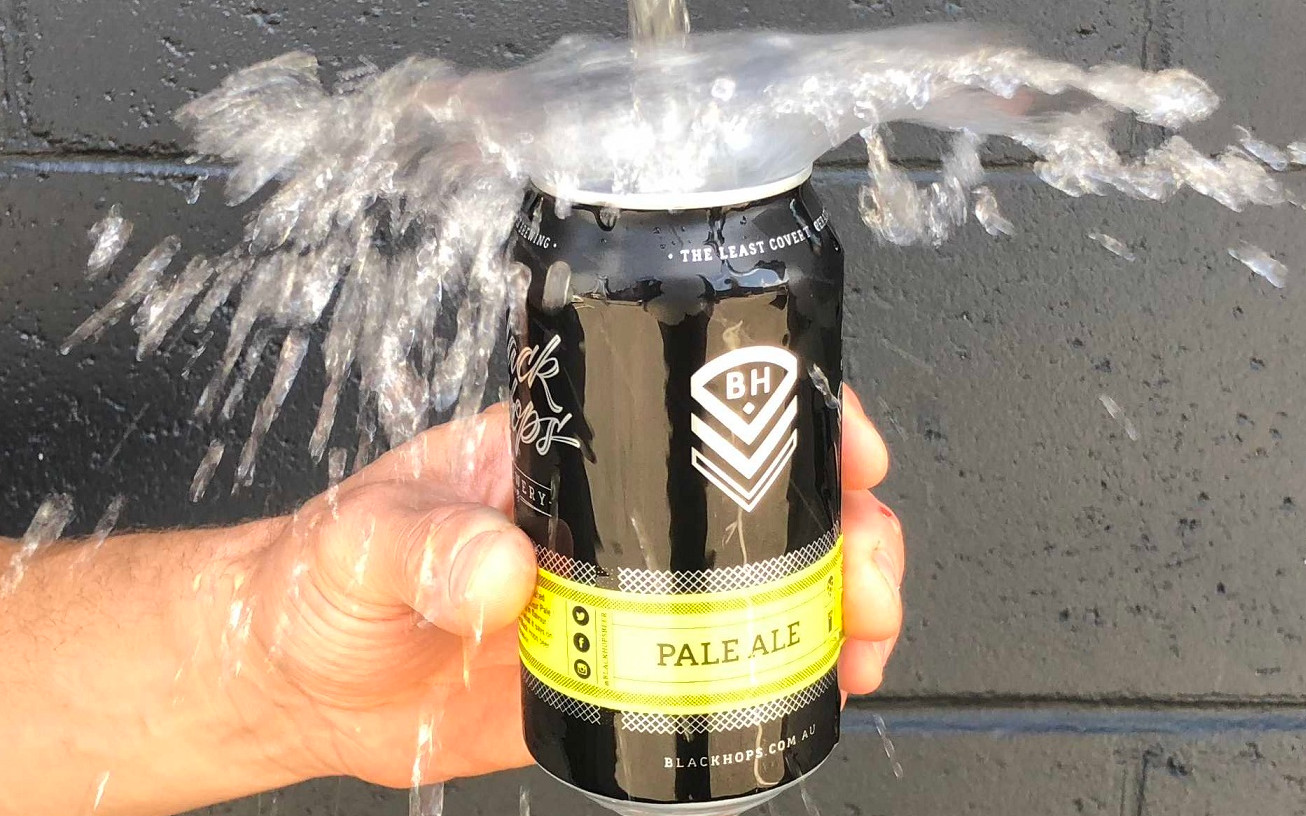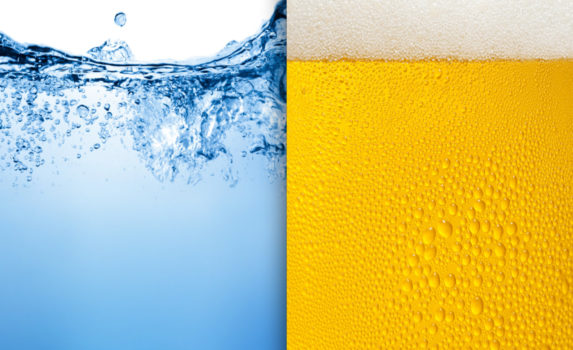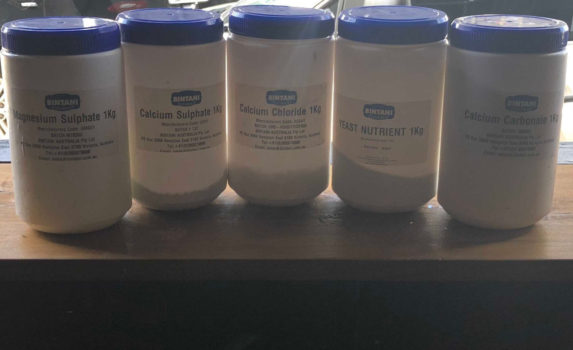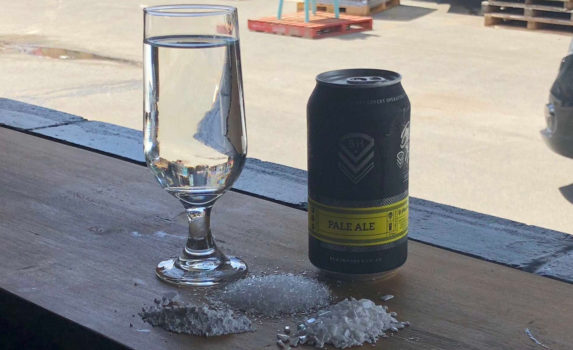Most beer aficionados can name three of its key ingredients without too much trouble; hello malt, yeast and hops. But there’s a somewhat more mysterious fourth ingredient that’s just as important – water. In fact, beer consists, on average, of around 95% H2O!
While it might be plain on the eye and palate, water is actually a complex chemical beast, consisting of salts, ions and minerals, that must be analysed and tweaked during the brewing process to ensure the correct balance and alkalinity for the style of beer you’re brewing.
The words ‘water chemistry’ are probably not the first thing that most people associate with brewing great beer. But without the correct water chemistry balance during the brewing process, your beer won’t be what it should be. Or in the word of Govs, you’ll be brewing ‘mediocre’ beer.
Water’s effect on beer
Water chemistry is a complex topic. This article only scratches the surface of what, why and how when it comes to this topic. The terms ‘hardness’ (the amount of dissolved calcium and magnesium) and ‘alkalinity’ (the amount of carbonate and bicarbonate) are two of the most important considerations when it comes to getting your water chemistry right.
As a general rule, your brewing water should have low to moderate levels of hardness and alkalinity. But this will vary depending on the style of beer you are brewing. Without going into the nitty-gritty (we could be here all day otherwise), you can learn more about these two factors here.
The following water-related factors must also be considered:
- pH level; this is a biggie, and affects every stage of the brewing process. In simple terms, the pH level of your brewing water needs to fall within specifically defined ranges to enable optimal enzymatic reaction and protein coagulation. During fermentation, getting your pH balance right will promote a good environment for yeast and conversely an undesirable environment for bacteria.
- sulfate-to-chloride ratio: this influence is attributed to the extraction of fine bittering compounds from hops and promoting rounded malt flavour. It also contributes to the ‘mouthfeel’ of your beer.
- the presence of contaminants: iron, copper and chlorine can have negative effects on beer, such as: creating an unpleasant inky/metallic taste, haze formation, weak yeast metabolism and formation of other unpleasant chlorophenols.
Water provenance
Water provenance (the specific water chemistry associated with particular regions of the world) is one of the main reasons why certain locations became famous for specific beer styles. Take Ireland for example; the water near Dublin is very high in alkalinity, which makes it very suited for brewing Stouts and Dark Ales. This contrasts with the softer, ‘bohemian’ waters of Germany and the Czech Republic, which are ideal for brewing Pilsners and Helles style beers. Low residual alkalinity and a sulfate to chloride ratio balanced towards sulfate make this an excellent choice for light coloured and hop forward beers.
What properties and characteristics of water does a brewer need to consider?
First up, you’ll need to find out the levels of some of the main minerals and elements that are present in your local water supply. You can usually find this out online. Here are the ones that any brewer worth their salt will need to be across:
- Calcium (Ca+2): essential for reactions in the mash and fermentation. Calcium decreases mash pH and can be added using chalk, gypsum (calcium sulphate), or calcium chloride.
- Bicarbonate (HCO3-): this ion is the main driver of alkalinity. It also increases the pH of the mash. It can be added using chalk or baking soda.
- Magnesium (Mg+2): small amounts are required for mashing, and decreases mash pH. It can be added using epsom salt or magnesium chloride, but the magnesium present in the brewing malt is usually sufficient.
- Sulfate (SO4-2): used to increase the perceived hop character of your beer. Can be added using epsom salt or gypsum.
- Chloride (Cl-): used to increase the perceived maltiness of your beer. Can be added using calcium chloride or magnesium chloride.
- Sodium (Na+): good old salt is important for some beer styles, such as a German Gose. If the beer you’re brewing needs it, you can use either table salt (sodium chloride) or baking soda.
Calculating water chemistry
Then you’ll need to ‘tune’ the water to make sure it has the correct levels to facilitate the chemical reactions for the particular beer you’re brewing. Getting your water chemistry balance right will ensure you’re balancing the flavour ions and getting the correct pH in the mash, to name just a few.
What proportions of these minerals and elements do you need? Well that depends entirely on the style of beer you’re brewing. This article will give you some idea of the target and concentration levels required for different styles of beer.
To get your water chemistry calculations right, I’d recommend using an online water chemistry calculator. Don’t freak out when you first look at it, as while it may look like you need a PHD in chemistry, it’s actually not that difficult. Here’s two of them:
Pale Ale water chemistry
So let’s check out the water chemistry calculations we use for one of our main beers, Pale Ale.
mg/L = milligrams per litre
Calcium (Ca+2): 75 mg/L
Magnesium (Mg+2): 5 mg/L
Sodium (Na+): 10 mg/L
Chloride (Cl-): 50 mg/L
Sulfate (SO4-2): 150 mg/L
Low residual alkalinity and a sulfate to chloride ratio balanced towards sulfate make this an excellent choice for light colored (2-5 SRM) and hop forward beers. The mineral level is restrained and should not show through in the taste of the beer.
We hope this has provided you with some insight into the role of water in brewing an epic beer. As always, if you have any feedback or questions, we’d love to hear from you.



